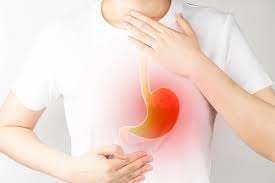Acidity - Ayurvedic Perception

Acidity is a common ailment that many individuals face in their day-to-day lives. However, exploring this issue through the lens of Ayurveda offers a unique and comprehensive understanding, considering the interconnectedness of mind, body, and spirit.
Introduction
In the hustle and bustle of modern life, acidity has become a prevalent concern. Before diving into Ayurvedic perspectives, let’s briefly explore what acidity entails in general. Amla Pitta is condition in Ayurveda which correlated with Acidity. Acidity is often associated with a burning sensation in the chest, bloating, and indigestion. Ayurveda, the ancient Indian system of medicine, provides a holistic approach to address and prevent acidity. Acidity may be acute but the process behind it doesn’t. I here give an example for proper understanding of how acidity occurs.
If we make curd in a pot and the same pot used immediately, without proper washing to store milk. What happens to that milk? It turns into curd again. The same phenomena happens in our body. After consuming causative factors for long time, our digestive system gets sourness. Then Some food (like fast food) triggers this sourness and causes acidity for some time. When we take antacid, it reduces acidity but not sourness of system. Sourness remains as it is. So, after eating any healthy food, the sourness of our digestive system turns that into sour food. (As empty but unwashed pot turns milk into curd). Thus, frequent acidity happens. This frequent sourness makes improper digestion leading to various disorders. So proper treatment needed.
Tridosha Concept in Ayurveda
Ayurveda revolves around the concept of Tridosha—Vata, Pitta, and Kapha. This tridosha helps for proper working of all organs. Ayurveda defines acidity as an imbalance of the Pitta dosha, one of the three fundamental energies governing the body. According to Ayurvedic principles, various factors contribute to this imbalance, including improper dietary habits, stress, and environmental factors. In the context of acidity, the Pitta dosha plays a crucial role. Pitta governs digestion and metabolism, and its aggravation can lead to acidity-related issues. But in every condition of acidity, it is not necessary to have excess pitta. in some cases, exaggerated Vata dosha can also provoke normal pitta to produce Acidity.
Causes of Acidity
- Frequent intake of Fast food
- Some medicines also causes acidity
- Mental stress
- Frequent intake of sour, salty, spicy food
- Frequent intake of food that incompatible with our body.
- Alcoholism
- Frequent intake of heavy, excessive hot, excessive cold foods.
- Day time sleep and sleep at late night.
- Over exercise
Symptoms of Acidity in Ayurveda
Recognizing the symptoms of acidity in Ayurveda involves understanding the subtle signals from the body, such as changes in appetite, the appearance of the tongue, and disturbances in the digestive fire. Identifying these early signs allows for proactive measures.
- Prodromal Signs (Signs which shows before actual starting of disease)
- Reduced hunger
- Sourness in mouth
- Burning sensation in throat and in chest
- Increased salivation
2. Signs and symptoms
- Severe burning sensation
- Indigestion
- Nausea, Vomiting
- Sour burp
- Tastelessness
- Heaviness in abdomen
Ayurvedic Diagnosis Techniques
Ayurvedic practitioners employ unique diagnostic techniques like Nadi Pariksha (pulse diagnosis) and tongue examination to assess the state of dosha imbalance and pinpoint the root cause of acidity. Also, for acidity it is necessary to find out root factor behind it.
Ayurvedic Treatment for Acidity
Herbal Remedies
The rich tradition of Ayurveda boasts an array of herbs known for their efficacy in managing acidity.
- Reduce pitta – like Shankha, Kaamdudha etc
- Reduces sourness – Avipattikar churna etc
- Improves digestion – sutshekhar ras etc
Therapies
- Panchkarma – most effective treatment
- Snehapaan
- Abhyanga
- Shirodhara
- Gandush, Kavala etc
Dietary recommendation and lifestyle change
Ayurveda emphasizes the impact of diet on overall health. The article delves into common specific foods to avoid and offers a comprehensive Ayurvedic diet plan to balance the Pitta dosha, providing practical tips for everyday choices. But this may change for some individual. Personalized diet plan are the best. For it you need to contact us.
1. Avoid
- Curd
- Banana
- Very spicy and frozen food.
- Capsicums
- Pickle
- Cold-Drinks
- Any addiction
- Ghee
- Sweet fruit and fresh juices.
- 7 hour sleep in night.
- waking up early.
- Simple exercise.
Certain yoga poses and pranayama exercises prove beneficial in alleviating acidity, promoting not only physical well-being but also mental and emotional balance. Here are some –
Apanasana (Knees-to-Chest Pose)
Pavanamuktasana (Wind-Relieving Pose)
Ardha Matsyendrasana (Half Lord of the Fishes Pose)
Uttanasana (Forward Bend):
Bhujangasana (Cobra Pose):
Vajrasana (Thunderbolt Pose):
Nadi Shodhana (Alternate Nostril Breathing)
- 8. Sheetali Pranayama (Cooling Breath):
9. Bhramari Pranayama (Bee Breath):
10. Kapalbhati Pranayama (Skull Shining Breath):
11. Ujjayi Pranayama (Victorious Breath):
Case Study
Real-life examples illustrate the efficacy of Ayurvedic approaches to acidity, showcasing positive outcomes and testimonials from individuals who have embraced this holistic healing system. We have treated numerous patients having acute acidity to chronic acidity. I here providing one case.
Name – Mrs. Asha K. ; Age – 42 yrs / Female – She is having severe heart burn after each meal from around 6 years and it started increasing from last two months. When I examined her, I felt there was excess pitta and vata in body. After taking proper history, I found she has daily habit of eating curd in night as well as she had very stressful life in past few months. I advice her to take Panchkarma therapy. She got admitted for 11 days. Virechana given her on 9th day. after that I adviced to do yoga and pranayama for next 6 months. When she came back for follow-up after 15 days, she was completely normal and not had any episode of heart burn and indigestion. I continued her medicine for next 3 months and then stopped completely.
Myths and Facts About Ayurvedic Acidity Treatment
- Myth – Acidity is permanent and need to take medicine for lifetime.
- Fact – Proper treatment, guildline and precaution helps to cure this disease from root. and need no medicine for lifetime.
- Myth – Ayurvedic treatment is slow in acute cases of heart burn.
- Fact – Some Ayurvedic formulations have immediate effects and helps to reduce heart burn fast.
- Myth – Ayurvedic treatment for acidity is only panchkarma.
- Fact – No, Ayurveda has various medicines, yoga, pranayama, lifestyle modification and diet for management of acidity. Everything depends on individual’s prakruti. Do you want to know your Prakruti? Click here.
FAQs
- Yes. Ayurvedic treatments, including Panchakarma therapies, have shown effectiveness in managing chronic acidity. However, individual responses may vary.
- Integrative approaches are possible, but it’s advisable to consult with healthcare professionals before combining Ayurvedic remedies with conventional medications.
- Yes, certain yoga poses, like the ‘Cat-Cow’ stretch and ‘Apanasana,’ can provide immediate relief from acidity symptoms.
Getting result is easy. Balancing dosha isn’t. Thus individual may get result in 4 to 7 days. And for proper cure of disease, 3 to 12 months are necessary.
- Ayurveda encompasses a holistic approach, including dietary recommendations, lifestyle adjustments, and stress management techniques for overall well-being
Uniqueness of our therapies
In Arogya Mandir – Shri Siddhanath Ayurvedic Hospital, Miraj, every patient is examined through ayurvedic perception deeply. By applying noninvasive Ayurvedic diagnostic tools like Ashtavidha Parikshan, Nadi Parikshan etc exact pathogenesis of disease is founded out and then therapies are advised according to condition of disease. Thus results come early.
Our therapies have following uniqueness.
- Silent, clean, therapy room with trained therapist and positive environment.
- Appropriate massage oil is selected according to Prakruti and disease condition of patient.
- Free Prakruti and Dhatu Sarata examination before starting of therapies.
- Authenticate procedure of each therapy.
- Appropriate use of herbal medicines and instruments during therapy.
- Special rooms with all facility for indoor patient.
Share this article for free.
Copyright message – This article is published on drchivateayurved.org by Dr. Prashant Chivate. This article is made for information about disease. Any other use of this article is strictly prohibited. All rights reserved
